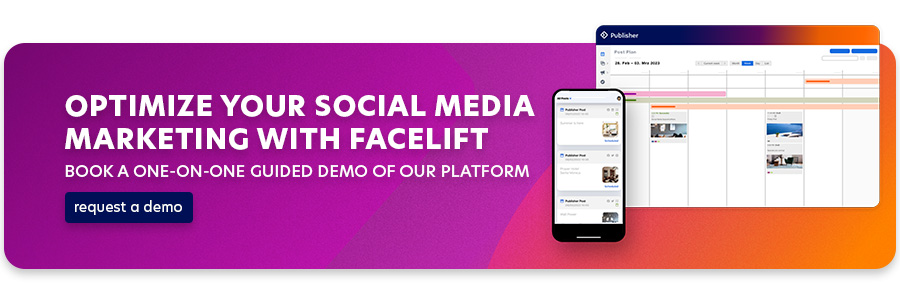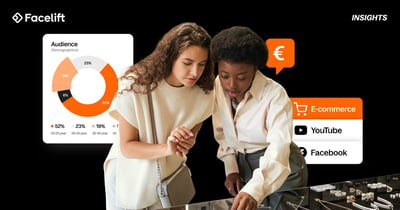If you're a marketeer on social networks like Facebook, you know how important it is to get the most reach for your content. The more reach you have, the more potential customers you can get to - simple math.
On Facebook and all the other social networks, organic reach is often boosted by paid advertising, which makes sense since the algorithms are, unfortunately, giving you less and less organic reach. But you can still maximize the success of your content by starting at the very beginning of the value chain: The content on your website!
In the following article, we present 7 ideas for high-reach content:
Top 7 Traffic Ideas
Idea 1: Solve a specific problem for your buyer persona
Nowadays, every company has a website. And there is always a target audience. This target group always has certain questions and burning issues under their nails. This is your opportunity: Create content that solves a specific problem for your target audience.
Take DIY stores: many do-it-yourselfers need to learn to drill through tiles without splintering. Innovative DIY stores produce videos that show exactly how to do it right - and how to avoid breaking tiles while drilling. Ideally, this content will also be made with the appropriate drilling machine, for example, sold online. This will establish you as an expert in the field - and solve a specific problem for your target audience.
Because the content's quality solves the problem, it will be read and shared more. This is how reach increases.
Facelift's example: Social media budget planning made easy. With our budget planner, we make it easy for our target audience (social media managers and marketers) to plan their budgets.
Idea 2: Publish a step-by-step-guide
It's a similar story with how-to guides. It doesn't have to be about a craft or a specific product - it's enough to create a tutorial for your website that shows your users how to use particular software features.
Example: Major magazines regularly create content to introduce new games, programs, or apps. For instance, WhatsApp tutorials are very popular because the app has more than 2 billion users worldwide and offers many features that are not obvious at first glance.
Of course, your tutorials should always be relevant and based on the content your users are actively asking for - but the basic principle is always the same: explain something in a way that is easy, quick, and simple for others to understand and use.
Facelift's example: How do you create a TikTok Business account or add music to an IG Story? In these step-by-step instructions, we'll guide our target audience through social media pitfalls that might initially seem confusing.
Idea 3: Write a "Top 10 Article".
"Top 10 articles have a special appeal to people. Think about it: there are charts on the radio, sports rankings, and the medal table at every Olympics. Why is this so? Because people like to measure and compare themselves. It is not for nothing that, for example, the "Top 10" are almost always shown or played on charts because these are the most successful songs that most people know (and like).
The principle is simple and easy to understand. So why shouldn't it work for content? Your users will consume such content because they expect to be given advice on which applications are worthwhile. You provide decision support and make it easier for your users to commit to something. This "help function" also builds trust - after all, who doesn't like to be helped with tough decisions? So feel free to present "comparison lists" and show how your "top 10 rankings" arrived.
Facelift's example: 10 tips for more interaction on Instagram or 10+1 tips for better customer service. These top tips are particularly high-reach blog posts for us.
Idea 4: Create a series of articles
Some things cannot be explained in a nutshell, and complex issues often need to be described in much more detail. There is content on the web that is very long, and it is probably an imposition for almost any reader to read a text of 10,000 words or more. In such cases, you may want to use a series of articles, as they can provide a more comprehensive overview, which makes them easier to read.
Article series are also a great way to keep your users engaged over time. If you cover a topic entirely in one article, your users will be gone after consuming the article - and you will have to bring them back to your site with another piece.
Example: A soccer website could have a long article about the clubs in the Bundesliga, with a few sentences about each club. But what's wrong with doing this in more detail and using 18 individual articles to ensure that not just once but 18 times more visitors come to the website?
Facelift's example: In our interview series on YouTube, we cover different channel goals in different articles. E.g., How to achieve branding and performance with YouTube or Advertising on YouTube: Tips, trends, and news.
Idea 5: Debunk common myths
Have you ever read things on the internet that you know (or should know) don't work?
For example, using lots of keywords in your website's meta tags will improve your Google rankings. Manually submitting your website to Google will also get you a better ranking in search results. These are classic myths that simply (and demonstrably!) do not correspond to current facts and figures. Why these myths persist is a phenomenon, but that's the point. This is about how your content can benefit from these myths!
The best way to do this is through "disenchantment." So, write about these myths, clarify what is wrong with them, and show what is right. If you do this well, you will attract a lot of traffic with this type of content - when you share it on social media and your website as a first step.
At the same time, you can position yourself and your company as an authority on a particular topic. It's like killing two birds with one stone. Could you make this 'education' tactic a permanent part of your strategy? You'll achieve expert status for yourself and your company, which will pay dividends in terms of reputation. Your company will become better known, and, of course, your reach will increase.
Facelift's example: Have you heard the myth that social media management tools limit your reach? Then, it's time to counter this myth and debunk it once and for all.
Idea 6: Create gated content
A classic way to get more attention and reach online is to offer free products like a whitepaper. eBooks or checklists are also recommended. As long as you give away products for free and create value, you are on the right track - as long as you stay within your niche.
Free products you offer for download on your website will receive above-average traffic. Combine this with a free newsletter with high-quality, helpful content, and you can generate new leads and retain potential customers at an early stage. In this way, you produce content that not only generates more reach once. You also ensure that you can generate traffic via email marketing at the touch of a button in the future.
Facelift's example: At Facelift, we use this tactic regularly and get great results. Here are our top resources:
- Step-by-step Guide to a Social Media Content Plan
- Your Guide to Social Media Stories and Vertical Videos
- Employer Branding on Social Media: The Human Side of Social

Idea 7: Post a resource article
There's a lot of searching going on online, and Google is the number one place people go to find information. But there's a catch: Although Google knows all the publicly available websites in the world and lists many of them in its index, it only gives the searcher an overview - the actual research is up to you. This can often be time-consuming and frustrating, but you, as a content creator or entrepreneur, can help. For example, create content about useful and popular resources in your thematic niche.
Example: WordPress: This content management system is used by countless websites worldwide - so interest is high. An article about the most popular and useful plugins for WordPress will, therefore, attract much attention and generate a lot of reach and traffic for the author - and this principle can be applied to pretty much any topic.
It's all about providing a service to visitors that they can't get anywhere else: you're summarising information, giving an opinion, and explaining how your content is valuable. And if you have done everything right, your content will spread all by itself...
Conclusion on traffic ideas
If you want to reach and traffic for your website, produce content that attracts users' attention. Offer unique content that cannot be found anywhere else. Make sure your users get value from what you publish, and at the same time, make sure you are engaging potential customers through email marketing or social media. This will make it much easier for you to generate more traffic when you need it. The more unique your content is and the more you address the specific needs of your audience, the more successful you will be.
Lastly, Facelift is the leading social media management tool for companies with multiple social media accounts who want to save time and money. Curious? Then, sign up for our free and no-obligation demo.








